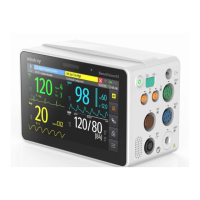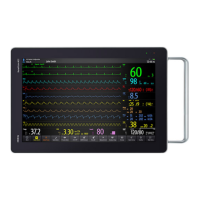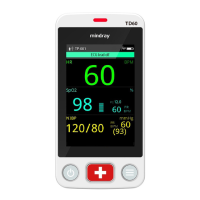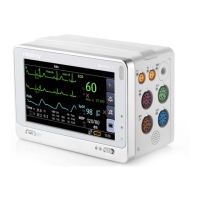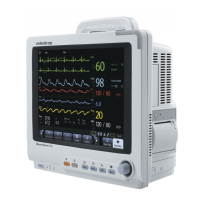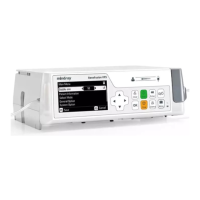24 - 2 BeneVision N Series Patient Monitor Operator’s Manual
24.2 AG Safety Information
• To avoid explosion hazard, do not use flammable anesthetic agent such as ether and cyclopropane
for this equipment.
• Using high-frequency electrosurgical units may increase the risk of skin burn. In this case, do not use
antistatic or conductive respiratory tubing.
• Route all tubing away from the patient’s throat to avoid strangulation.
• Perform the measurement in a well-ventilated environment.
• EtCO
2
values measured from the AG module may differ from that of from the blood gas analysis.
• The AG module automatic suppress physiological alarms until breathing waves have been detected.
Make sure that a patient is properly connected when monitoring with the AG module.
24.3 AG Measurement Limitations
The following factors may influence the measurement accuracy:
■ Leaks or internal venting of sampled gas
■ Mechanical shock
■ Cyclic pressure up to 10 kPa (100 cmH
2
O)
■ Other sources of interference, if any
24.4 AG Display
The AG module can send waves and numerics for all measured anesthetic gases for display on the monitor,
including:
■ CO
2
, O
2
, N
2
O and AA waves
■ awRR: airway respiratory rate
■ MAC: minimum alveolar concentration
■ End tidal (Et) and fraction of inspired (Fi) numerics for CO
2
, O
2
, N
2
O and AA
AA represents one of the following agents: Des (desflurane), Iso (isoflurane), Enf (enflurane), Sev (sevoflurane), or
Hal (halothane).

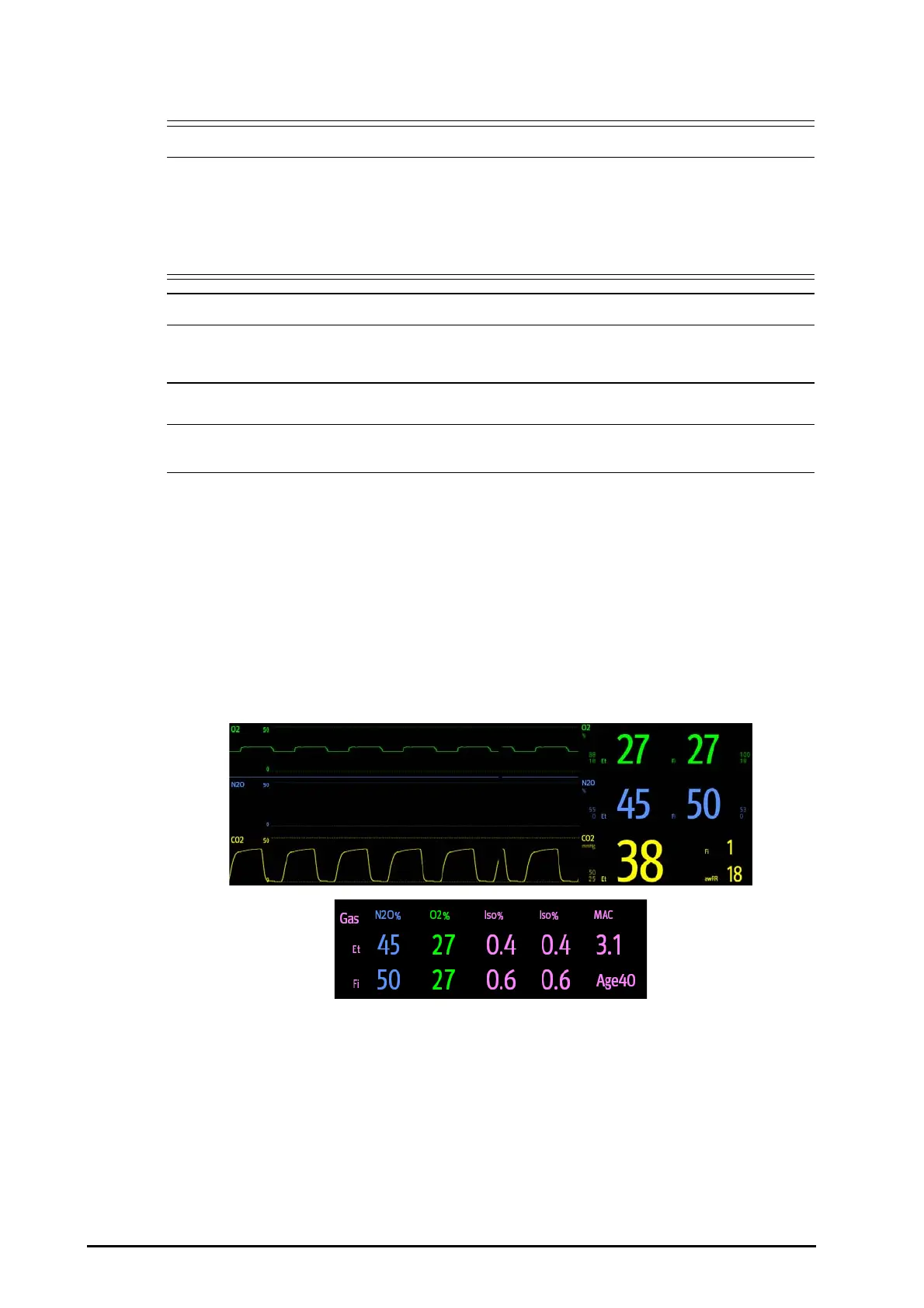